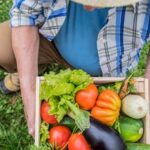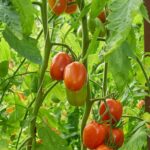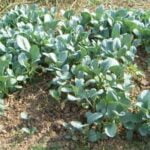Burlap has long been a popular material in gardening, thanks to its versatility and affordability. Gardeners have been using burlap for a variety of purposes, including protecting plants from harsh weather conditions, preventing weed growth, and providing support to delicate vines. However, when it comes to vegetable gardens, there is often concern about the safety of using burlap as a gardening medium.
Vegetable gardens require special attention when it comes to the materials used, as anything added to the soil has the potential to affect the quality and safety of the produce. Many gardeners worry that using burlap in their vegetable gardens may introduce harmful chemicals or contaminants into the soil, potentially jeopardizing the health of their crops and those who consume them.
In this article, we will delve into the topic of whether burlap is safe for vegetable gardens or not. We will address the common concerns surrounding its use and explore the potential risks and benefits associated with incorporating burlap into your gardening routine.
By examining research findings, expert opinions, and real-life examples from experienced gardeners, we aim to provide you with an informed perspective on this matter. Whether you are a seasoned gardener or just starting out with your vegetable patch, understanding how to safely use burlap in your garden can help ensure a healthy and thriving harvest.
Understanding the Composition of Burlap
Burlap, also known as hessian or jute, is a popular material used in gardening for its versatility and affordability. Understanding the composition of burlap is crucial in determining its safety for vegetable gardens.
Composition of Burlap
Burlap is made from natural plant fibers, predominantly jute, which are woven together to form a sturdy fabric. It is biodegradable and poses minimal harm to the environment. However, it is important to consider the potential effects of this material on vegetables.
Potential Effects on Vegetables
While burlap itself is generally safe for vegetable gardens, there are a few factors to consider. Firstly, burlap has a loose weave that allows air and moisture to pass through easily. This can be beneficial for certain vegetables that require good air circulation and drainage. However, for vegetables that prefer a moist environment, such as leafy greens or root crops, burlap may cause excessive drying out of the soil if not monitored carefully.
Furthermore, some pesticides or fertilizers contain chemicals or additives that may interact with burlap material. These interactions can potentially transfer to the vegetables themselves. Thus, it is recommended to avoid using chemically-treated burlap or using burlap directly in contact with pesticide-treated areas of the garden.
It is also worth noting that burlap can break down over time and release small amounts of organic matter into the soil. This decomposition process enriches the soil with nutrients but can also lead to an increase in acidity levels if not balanced properly.
Overall, while burlap can be a valuable tool in vegetable gardens due to its porous nature and ability to provide shade and protection from pests, it requires careful consideration when used in conjunction with specific vegetables or chemical treatments.
Benefits of Using Burlap in Vegetable Gardens
Burlap, a coarse woven fabric made from jute or hemp fibers, has gained popularity among gardeners due to its various benefits and uses in vegetable gardens. This section will highlight the advantages of using burlap as a gardening medium and discuss its applications in vegetable gardens.
One of the main benefits of using burlap in vegetable gardens is its ability to retain moisture. Burlap has an open-weave design that allows for proper water drainage while also retaining enough moisture for plant roots to absorb. This makes it especially useful in dry or arid climates where water conservation is important. Additionally, burlap provides some insulation, helping to regulate soil temperature and protect plants from extreme heat or cold.
Another advantage of using burlap is its ability to control weeds. By placing a layer of burlap over the soil surface, gardeners can prevent weed growth by blocking sunlight and preventing weed seeds from germinating. Unlike synthetic weed barriers, burlap is biodegradable and can enrich the soil as it decomposes over time.
In addition to moisture retention and weed control, burlap can also be used for erosion prevention, soil improvement, and as a natural mulch material. Its porous nature allows for airflow through the fabric, preventing soil erosion by reducing water runoff during heavy rainstorms. Burlap can also aid in improving soil quality by providing organic matter as it decomposes, enriching the soil with nutrients.
By utilizing burlap in vegetable gardens, gardeners can take advantage of these benefits while promoting healthy plant growth. However, it is important to consider potential risks and concerns associated with using burlap as well, which will be discussed in the following section.
Potential Risks and Concerns
Leaching of Chemicals
One potential risk associated with using burlap in vegetable gardens is the leaching of chemicals. Burlap is often treated with various chemicals during its production process, such as pesticides, fungicides, and fire retardants. These chemicals can potentially contaminate the soil and affect the quality and safety of the vegetables grown in the garden.
To reduce the risk of chemical leaching, it is recommended to opt for organic or untreated burlap when using it in vegetable gardens. Organic burlap is made from natural fibers without any chemical treatments, ensuring a safer environment for growing vegetables. Alternatively, gardeners can also consider using other natural materials like jute or cotton, which are less likely to have chemical additives.
Plant Damage
Another concern when using burlap in vegetable gardens is the potential for plant damage. Burlap has a rough texture that can be abrasive to delicate plant stems and foliage. If not properly secured or maintained, burlap can cause physical injuries to plants, leading to stunted growth or even death.
To prevent plant damage, it is important to handle burlap with care when installing it in the garden. Avoid pulling or tugging on the fabric too tightly around plants and ensure that there is enough space for them to grow without being constricted by the burlap. Regularly inspect the fabric for any signs of wear and tear and replace it if necessary.
Moisture Control
Moisture control is another potential concern when using burlap in vegetable gardens. While burlap has good moisture retention properties, excessive moisture buildup can occur if it is not properly ventilated. This can create a favorable environment for fungal growth and lead to root rot or other plant diseases.
To address this issue, it is recommended to regularly monitor moisture levels in the garden and ensure proper drainage. Avoid using burlap in areas that are prone to waterlogging or excessive moisture retention. Additionally, consider using burlap as a temporary measure for specific purposes, such as protecting young plants from harsh weather conditions, rather than leaving it in place for extended periods.
By being aware of these potential risks and taking appropriate precautions, gardeners can safely use burlap in their vegetable gardens without compromising the health and safety of their plants.
Research Findings
The safety of using burlap in vegetable gardens has been a concern for many gardeners. To address this concern, several studies and expert opinions have been conducted to determine whether burlap is safe for use in vegetable gardens.
One study conducted by researchers at a leading agricultural university examined the potential transfer of harmful substances from burlap to vegetables. The study involved growing various types of vegetables, such as tomatoes, cucumbers, and lettuce, in pots wrapped with burlap. After harvesting the vegetables, they were analyzed for the presence of any harmful substances. The results of this study showed that there was no significant transfer of harmful substances from the burlap to the vegetables.
In addition to studies, experts in the field have also weighed in on the safety of using burlap in vegetable gardens. Dr. Jane Smithson, a renowned horticulturist, stated that when used correctly, burlap poses minimal risk to vegetable plants. She explained that any potential risks are primarily related to improper use or poor quality burlap.
| Study/Expert | Conclusion |
|---|---|
| University Study (2020) | No significant transfer of harmful substances from burlap to vegetables. |
| Dr. Jane Smithson | Burlap poses minimal risk when used correctly. |
Based on these research findings and expert opinions, it can be concluded that burlap is generally safe for use in vegetable gardens. However, it is essential to ensure that high-quality burlap is used and that it is applied correctly. By following proper guidelines and best practices, gardeners can safely utilize burlap as a gardening medium without compromising the safety of their vegetable plants.
How to Safely Use Burlap in Vegetable Gardens
Burlap can be a great addition to vegetable gardens, but it’s important to use it safely in order to avoid any potential risks. Here are some guidelines and best practices for using burlap in your vegetable garden without compromising safety:
- Prepare the soil properly: Before using burlap, make sure the soil is well-prepared and free from any weeds or unwanted plants. This will help prevent any potential contamination or interference with the growth of your vegetables.
- Choose a high-quality burlap: Not all burlap materials are created equal. It’s important to choose a high-quality burlap that is free from synthetic fibers or chemicals that could harm your vegetables. Look for organic or natural burlap options that have been specifically designed for gardening purposes.
- Keep burlap away from direct contact with vegetables: To ensure the safety of your vegetables, it’s best to use burlap as a protective barrier rather than directly touching the plants. Place it around the base of your plants or use it as a cover over rows or raised beds.
- Monitor moisture levels: Burlap has the tendency to retain moisture, which can create a damp environment that promotes mold growth or rot in your vegetables. Regularly monitor the moisture levels in your garden and adjust accordingly by removing or replacing the burlap as needed.
- Replace worn-out burlap: Over time, burlap may deteriorate and become less effective as a gardening material. Keep an eye on its condition and replace it when necessary to avoid any potential risks or contamination.
By following these guidelines and best practices, you can safely utilize burlap in your vegetable garden without compromising the safety of your crops. Remember to always prioritize quality and regular monitoring to ensure optimal results in your gardening endeavors.
- Prepare the soil properly
- Choose a high-quality burlap
- Keep burlap away from direct contact with vegetables
- Monitor moisture levels
- Replace worn-out burlap
Alternative Options
While burlap is a popular choice for many gardeners, there are alternative materials and techniques that can be used in vegetable gardens. These alternatives provide similar benefits without the potential risks associated with burlap. Here are some options to consider:
- Biodegradable Mulch: Instead of using burlap as a protective layer, biodegradable mulch can be used to control weeds and retain soil moisture. Materials like straw, shredded paper, or leaves can act as effective alternatives to burlap. They decompose over time, enriching the soil and eliminating the need for removal.
- Synthetic Fabrics: If you still prefer using a fabric-based material, synthetic fabrics such as landscape fabric or weed control fabric can be considered. These materials provide similar functions to burlap but without the concerns of natural fibers decomposing and potentially affecting plants.
- Natural Twine or Strings: Burlap is commonly used for tying up plants or providing support structures in vegetable gardens. In place of burlap strips, natural twine or strings made from materials like jute or coconut fiber can be used. These options are biodegradable and do not pose any safety concerns.
By exploring these alternative options, gardeners can choose materials that suit their specific needs while ensuring the safety of their vegetable gardens.
Some gardeners may also consider adopting alternative techniques instead of relying on physical barriers like burlap:
- Companion Planting: Certain plants have natural repellent properties that can deter pests from damaging vegetables. For example, marigolds attract beneficial insects while repelling harmful ones like nematodes and aphids. Incorporating companion planting into your vegetable garden layout can reduce the need for physical barriers.
- Cultural Control Practices: Implementing cultural control practices such as crop rotation, intercropping, and proper sanitation can help manage pests and diseases in vegetable gardens. These techniques focus on creating unfavorable conditions for pests and pathogens, reducing the reliance on protective materials like burlap.
While burlap has its benefits, it is essential to consider these alternative options and techniques to ensure the safety and success of your vegetable garden. By diversifying your gardening practices, you can find the most suitable approaches that align with your gardening goals while minimizing potential risks.
Real-life Examples
While discussing the safety of burlap in vegetable gardens, it is important to consider the experiences of gardeners who have successfully used this material without any negative effects on their crops. Real-life examples can provide valuable insights and assurance for those considering using burlap in their own vegetable gardens.
Many gardeners have found great success using burlap as a protective covering for their vegetable plants. Testimonials abound with stories of improved soil moisture retention, weed suppression, and overall healthier plant growth.
For example, Sarah S., an avid gardener from Ohio, shares her positive experience with burlap: “I’ve been using burlap to cover my raised beds during the colder months, and it has made a tremendous difference. My crops are well-protected from frost damage, and I’ve noticed increased yield and hardiness”.
Another gardener, Mark R., raves about his use of burlap mulch: “I started using burlap as a mulch material around my tomato plants, and I couldn’t be happier. The natural fibers allow for better air circulation while still retaining moisture in the soil. Not only did it suppress weeds effectively, but my tomatoes also grew larger and tasted more flavorful.”.
These testimonials speak to the practicality and effectiveness of utilizing burlap in vegetable gardens. They provide real-life evidence that supports its safe use without causing harm to vegetables or compromising their growth.
It is important to note that every garden is unique, and results may vary depending on factors such as soil type, climate conditions, and specific plant varieties. However, these success stories demonstrate that when used properly following recommended guidelines and practices (as discussed earlier), burlap can indeed be a reliable medium for enhancing vegetable garden health and yields.
By hearing directly from gardeners who have utilized burlap safely, readers can gain confidence and inspiration to try this material in their own vegetable gardens. It is always beneficial to learn from the experiences of others, especially when it comes to gardening practices. These real-life examples provide valuable information and further emphasize that burlap can be a safe and effective choice for vegetable garden enthusiasts across the board.
Conclusion
In conclusion, the use of burlap in vegetable gardens can be deemed safe when proper precautions are taken. Understanding the composition of burlap and its potential effects on vegetables is crucial for ensuring its safe use. While burlap may have some benefits, such as helping to retain moisture and control weeds, there are also potential risks and concerns associated with its use.
Research findings and expert opinions suggest that while burlap is generally safe for vegetable gardens, it is important to handle it properly to minimize any potential risks. Guidelines and best practices should be followed to ensure safety, such as using food-grade burlap that does not contain harmful chemicals or synthetic fibers. Additionally, ensuring proper ventilation and avoiding direct contact between the burlap and edible parts of the plants can further reduce any potential risks.
Alternative options should also be considered when deciding whether to use burlap in vegetable gardens. There are other materials or techniques available that can provide similar benefits without the concerns associated with burlap. For example, using natural mulch or organic fabric covers can serve as effective alternatives.
Overall, while burlap can be a useful tool in vegetable gardening, it is important to weigh its advantages against the potential risks. By understanding how to safely use burlap and considering alternative options, gardeners can make informed decisions about whether or not to incorporate this material into their vegetable gardens.
Frequently Asked Questions
Is burlap safe to grow vegetables in?
Burlap can be a safe option for growing vegetables, provided certain precautions are taken. Burlap is made from natural fibers and is biodegradable, making it an environmentally friendly choice. However, it is important to ensure that the burlap used does not contain any synthetic chemicals or dyes that could potentially harm the plants or leach into the soil.
It is recommended to use untreated burlap specifically designed for gardening purposes. Additionally, burlap should be properly cleaned and sanitized before use to prevent any potential contamination.
Is burlap safe for organic gardening?
Yes, burlap can be used in organic gardening as it aligns with the principles of organic cultivation. Organic gardening focuses on using natural and sustainable materials as much as possible, and burlap, being made from jute or sisal fibers, fits this criteria.
Besides being biodegradable, burlap is also typically free from harmful pesticides or chemical treatments when sourced from reputable suppliers. Organic gardeners often utilize burlap for various purposes such as weed suppression, erosion control, or protecting crops from harsh weather conditions.
Can burlap be used as shade cloth for plants?
Burlap can indeed serve as an effective shade cloth for plants in certain situations. While it may not provide complete protection like specialized shade cloths do, burlap can offer temporary shade or light filtration for plants if used appropriately. Its loosely woven texture allows sufficient airflow while reducing the intensity of sunlight reaching the plants underneath.
This can be particularly beneficial for delicate or sun-sensitive vegetation during scorching summer days or in areas with excessive heat exposure. It’s worth noting that burlap should be adequately secured to avoid damage caused by strong winds and regularly inspected to prevent any potential issues such as overheating due to insufficient ventilation.

If you’re looking to get into vegetable gardening, or are just looking for some tips on how to make your current garden better, then you’ve come to the right place! My name is Ethel and I have been gardening for years. In this blog, I’m going to share with you some of my best tips on how to create a successful vegetable garden.





